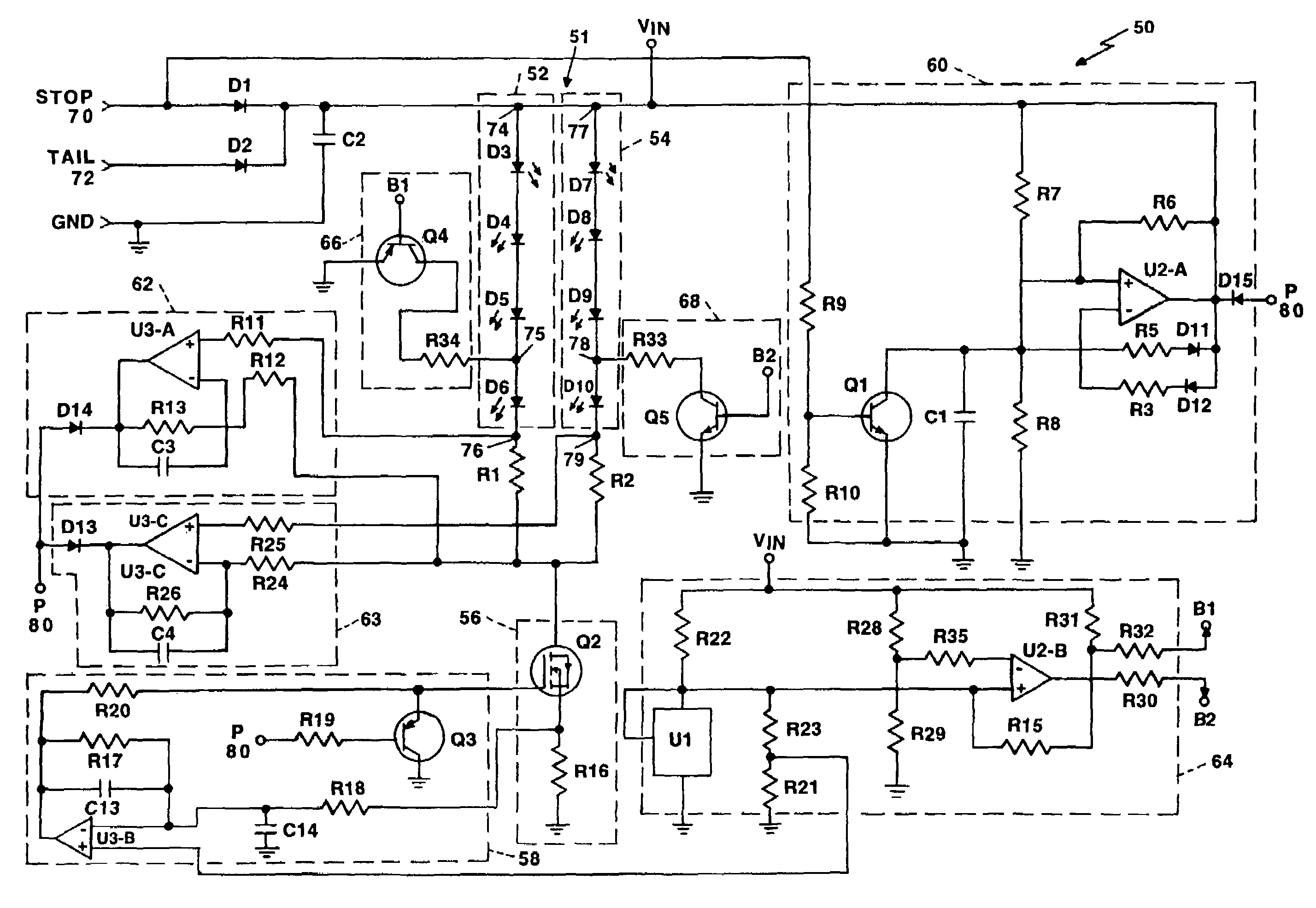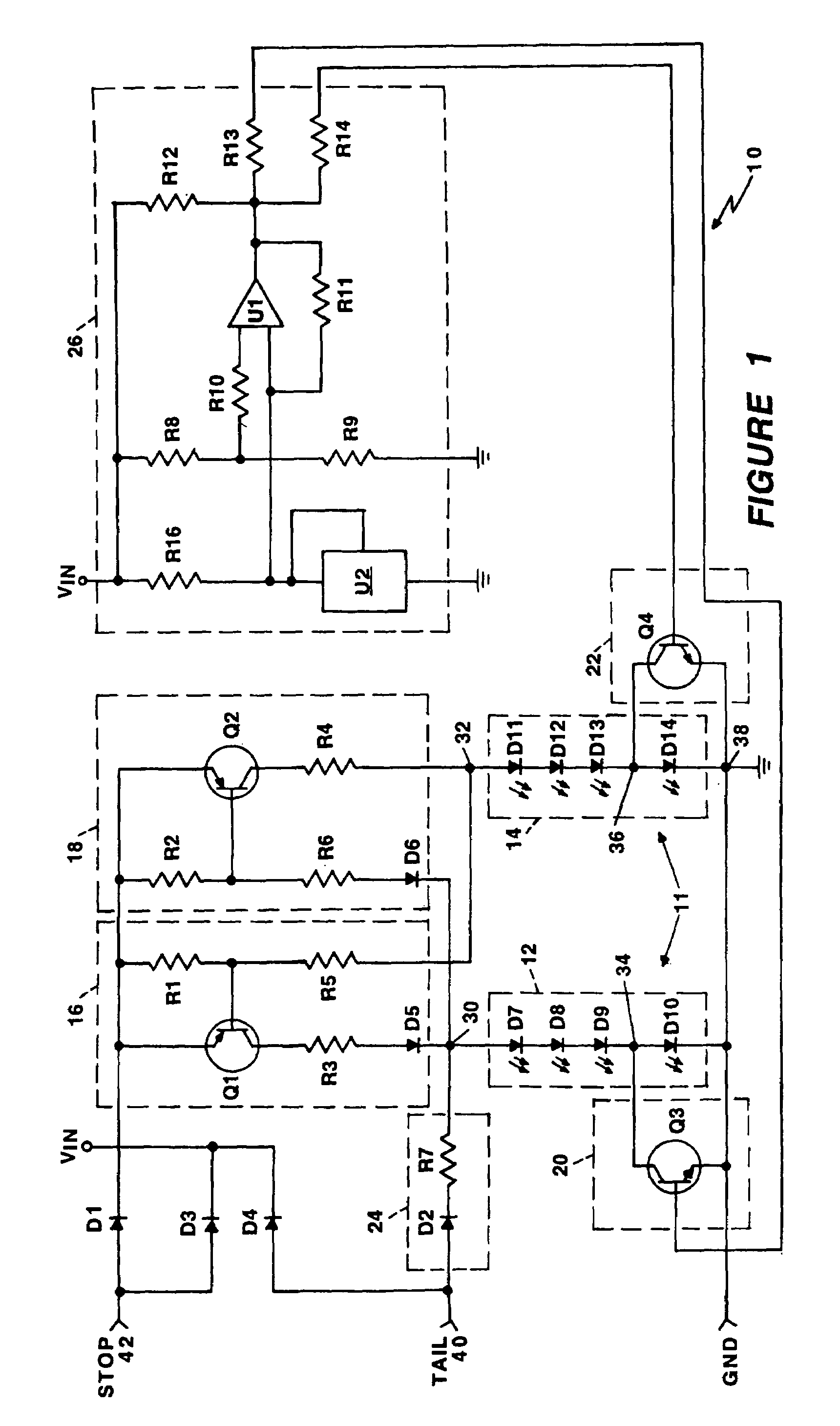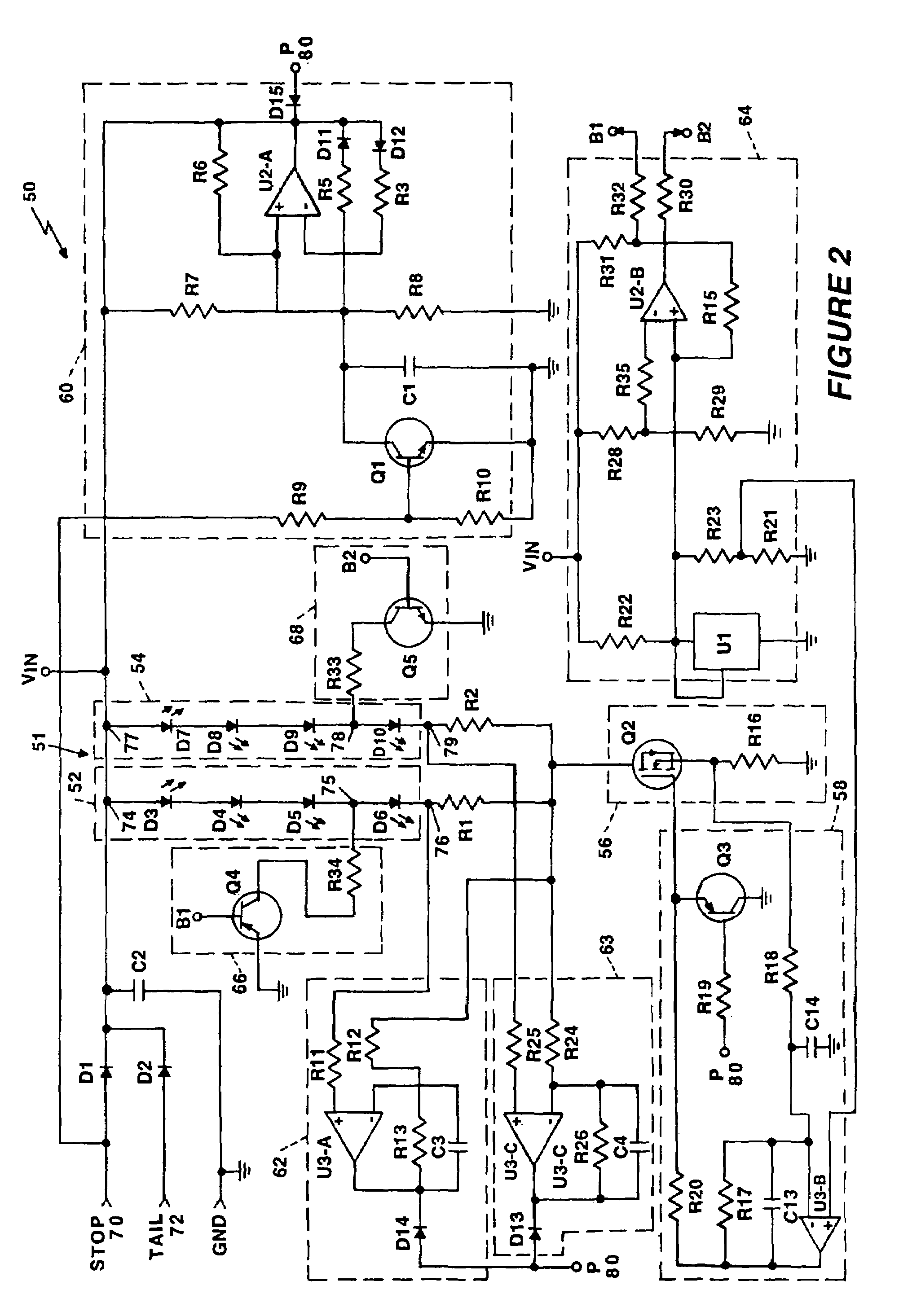Driver circuit for LED vehicle lamp
a technology of led vehicle lamps and driver circuits, which is applied in the direction of electric variable regulation, process and machine control, instruments, etc., can solve the problems of low efficiency, cumbersome current regulation, switching noise and cost,
- Summary
- Abstract
- Description
- Claims
- Application Information
AI Technical Summary
Benefits of technology
Problems solved by technology
Method used
Image
Examples
first embodiment
[0019]Referring to FIG. 1, a schematic diagram of a vehicle lamp driver circuit 10 is shown for driving an array 11 of light emitting diodes (LEDs) according to the present invention. The driver circuit 10 provides current via first LED Driver 16 and second LED driver 18 to an array 11 of LEDs arranged in two rows of four series connected LEDs, LED strings 12 and 14. The driver circuit 10 receives two control inputs, TAIL 40 (for tail lights) and STOP 42 (for stop lights), and has four output connections 30, 32, 34, 36 for connecting to the first LED string 12 and second LED string 14. The Tail 40 input causes the driver circuit 10 to operate in a TAIL mode, and the STOP 42 input causes the device circuit to operate in a STOP mode.
[0020]The first LED string 12 comprises four LEDs D7, D8, D9, and D10 connected in series. The series connections are from cathode to anode with the cathode of the last LED D10 connected to the common ground lead of a motor vehicle and the driver circuit c...
second embodiment
[0032]Referring now to FIG. 2, a schematic diagram of a vehicle lamp driver circuit 50 is shown for driving an array 51 of light emitting diodes (LEDs) arranged in two rows of 4 series connected LEDs according to the present invention. The driver circuit 50 provides linear regulation of current passing through a first LED string 52 and a second LED string 54. The driver circuit 50 receives two control input signals, STOP 70 and TAIL 72, and has six output connections 74–79 for connecting to the first LED string 52 and the second LED string 54. STOP 70 input causes the driver circuit 50 to operate in a linear mode whereby the current passing through the first LED string 52 and the second LED string 54 stays steady in a linear mode of operation. The TAIL 72 input causes the driver circuit 50 to operate in a pulsed mode whereby an average linear current passes through the first LED string 52 and the second LED string 54 resulting in the light output intensity of the LED array 51 in the...
PUM
 Login to View More
Login to View More Abstract
Description
Claims
Application Information
 Login to View More
Login to View More - R&D
- Intellectual Property
- Life Sciences
- Materials
- Tech Scout
- Unparalleled Data Quality
- Higher Quality Content
- 60% Fewer Hallucinations
Browse by: Latest US Patents, China's latest patents, Technical Efficacy Thesaurus, Application Domain, Technology Topic, Popular Technical Reports.
© 2025 PatSnap. All rights reserved.Legal|Privacy policy|Modern Slavery Act Transparency Statement|Sitemap|About US| Contact US: help@patsnap.com



